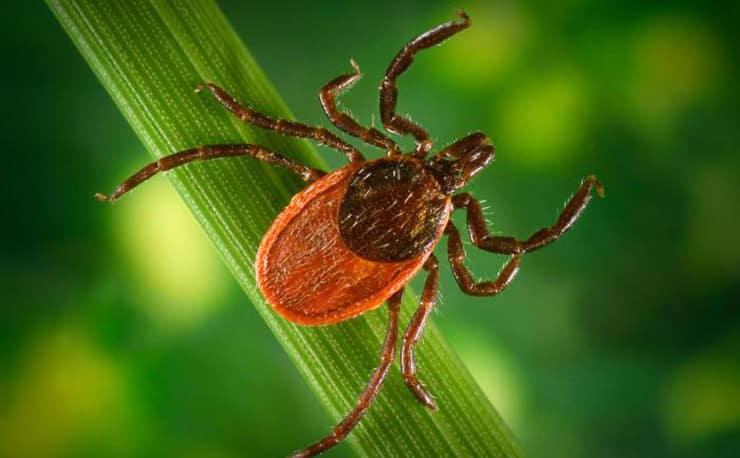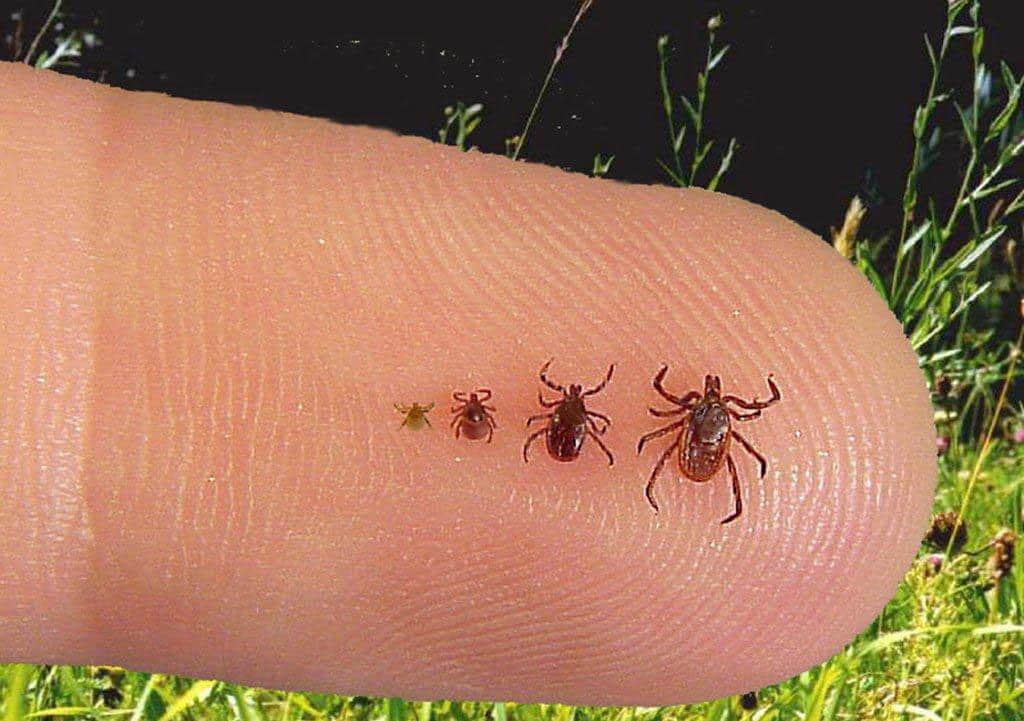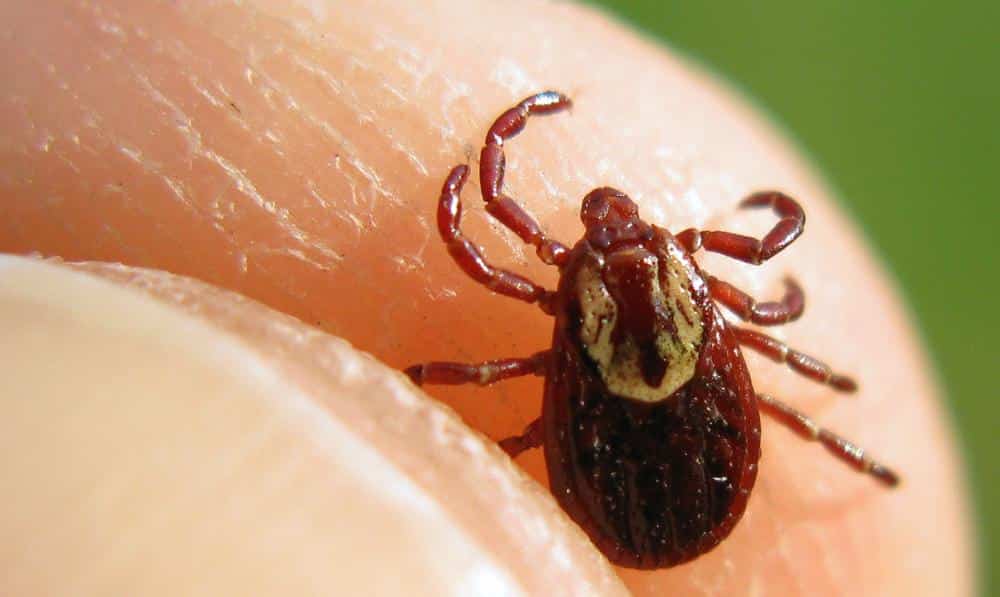
A Simple Walk Turns Deadly

For Tamela Wilson, it was supposed to be just a normal walk in the park with her family. Sadly, a tick bite would change the course of her life forever, leaving her family devastated and Tamila fighting for her life.
This is the story of one woman, an innocent insect encounter, and the terror it brought with it.
The Anatomy of the Tick

Ticks are considered to be small arachnids that feed off the blood of other mammals to survive. Most ticks are distributed through the eastern and southeastern United States.
The Danger of Disease

Tick bites can be fairly common, more so with dogs than humans. If you tend to take walks through heavily wooded areas or in high grass, it’s always good to do a thorough examination of your body to make sure a tick hasn’t hitched a ride.
Tick Bite Symptoms

One of the problems with ticks is they can spread disease. While being bitten by a tick doesn’t mean you are automatically going to contract something, it does put you at risk. A tick bite can cause redness, a full body rash, headache, stiffness, as well as a high fever and weakness in the limbs.
However, there are incidences when a tick bite can turn deadly…
A Normal Day at the Park

It was supposed to be a fun day at Missouri’s Meramec State Park. Tamela had visited the park with her family on numerous occasions and that beautiful day in 2017 was no different than the times before.
Of course, things would go terribly wrong.
Knowledge is Key

Tamela was the superintendent for the park and was very aware of the bugs and other wildlife that could pose a danger to visitors. She always had insect repellent on hand, especially when heading into the dense areas of the forest.
Checking for Critters

While there were a wide variety of bugs in the park that could make guests ill, ticks were the most common threat to people visiting.
After a nice walk with her daughters, Tamela made sure they all checked themselves for any critters who decided to take an unexpected ride on their clothing.
Feeling Unwell

Tamela’s daughter Andrea checked her over and found two small ticks. Sadly, this would only be the beginning of Tamela’s nightmare. Already suffering from non-Hodgkin’s lymphoma, Tamela began to feel ill in the days that followed.
Finally, she decided to head to the doctor for an examination.
Antibiotics Don’t Work

Her doctor wasn’t too concerned with the tick bite at first and thought Tamela was suffering from a urinary tract infection. He prescribed her antibiotics and sent Tamela on her way. Sadly, these didn’t work. As a follow-up, the doctor recommended she get some blood tests done, which revealed that her white blood cell count was down.
What could this mean?
Testing Begins

It didn’t take long for Tamela’s condition to worsen, and she would soon find herself at St. Louis’ Barnes-Jewish Hospital. The doctors continued to investigate her condition, unable to diagnose what was happening. When Tamela mentioned her tick bite, they immediately began to run tests for tick-related illness.
Doctors Begin to Suspect

There were to viruses that the doctors began to suspect Tamela could have contracted. One was the Heartland Virus and the other was Rocky Mountain Spotted Fever.
Rocky Mountain Spotted Fever

Rocky Mountain Spotted Fever was one of the most common tick bite related illnesses. The symptoms included headaches, fever, rash and blackened skin.
After the tests were run, it was determined that Tamela had neither of the diseases the doctors had theorized, bringing the investigation back to square one.
A Totally Unexpected Conclusion

Prior to the tests, Tamela’s blood had been sent off to the Center for Disease Control and Prevention. As her condition continued to deteriorate, the results finally came back and the results were not what the doctors had hoped for.
It seemed Tamela had contracted an extremely rare virus.
A Rare Virus

According to her lab results, Tamela had contracted the Bourbon virus. It was a virus that nobody at the hospital knew of and according to records, only four people total had ever been diagnosed with it.
The First Case

The very first case of the Bourbon virus was found in Kansas. A 68-year-old man had been bitten by a tick in 2014 and died 24-hours later from the virus. So far, only 8 people in the entire world had ever been documented with the condition.
Talk about a stroke of bad luck.
No Known Cure

Unfortunately for Tamela, there was no cure for the virus. Most people who contracted it felt very tired and had a severe fever, nausea, rashes, and headaches. All the doctors could do at this point was make Tamela comfortable.
Condition Worsens

As Tamela’s condition worsened, she contracted pneumonia along with hemophagocytic lymphohistiocytosis. This condition triggered the activation of the body’s immune cells, which would then build up in excess throughout the body.
Experimenting with Chemotherapy

Hoping to relieve her pain and improve her failing health, Tamela’s doctor attempted chemotherapy to assist with killing off the virus. Unfortunately, her condition didn’t improve. According to her daughter, the doctors were at a complete loss on how to help her.
Strength Deteriorates

As days passed, Tamela’s strength would swiftly dissipate. Her daughter revealed things got so bad that she could no longer lift her arms to pick up the phone.
Sadly, things were about to take a turn for the worse.
A Tragic End

Soon, Tamela could no longer eat or drink and she succumbed to her disease. On June 23, 2017, Tamela passed away. And it all began with what seemed like a harmless tick bite.
Complete Devastation

The family was stunned by Tamela’s death. It had only been three weeks since she had arrived at the hospital and the virus had completely decimated her. For her daughter, it was a tough time to process what had actually happened.
Raising Awareness

Due to the rarity of the Bourbon virus that claimed her mother, Tamela’s daughter has now made it her mission to educate people on ticks and the rare virus. She doesn’t want anyone else to have to go through the same tragedy, which could have been prevented.
The Media Warns Viewers

After her death, the local Missouri media warned locals of the tick-related disease and made Tamela’s story a lesson regarding tick protection during the summer months. The story was broadcast around the world, hoping to get people to understand the seriousness of tick bites.
Be Vigilant

For now, Tamela’s daughters only have the memories of their mother and hope to continue to shed light on the tick-related disease. While they may have lost their mother, they hope they can use her death for good and save someone’s life one day.
Rest in Peace, Tamela.








